Cryopump simulation
Introduction
A cryopump is used in vacuum systems when extremely low pressures must be achieved.
The pumping effect is due to the adsorption of molecules on an extremely cold surface.
Before the molecules adsorb on the wall the gas is cooled by the interaction with another cold surface to reduce the heat flux to the very cold surface.
PI-DSMC was used to simulate the gas dynamics in a cryopump.
It is possible to determine the pumping speed and the influence of parameters like the pump geometry, the temperature of the walls, the gas composition and the adsorption probability.
Example
The geometry of the cryopump is shown in the image below. The geometry is radially symmetric with the horizontal axis as the z-axis and the vertical axis as the radial axis. The temperature of the outer wall is 300 K. The temperature of the inner wall is 10 K. The inner wall is shielded by a metal container. The temperature of the container is maintained at 80 K.
The image below shows the density distribution inside the pump after the steady state has been reached.
Contour lines are drawn at 4e18, 6e18, 8e18, 1e19, 2e19, 3e19 and 4e19 molecules per cubic meter.
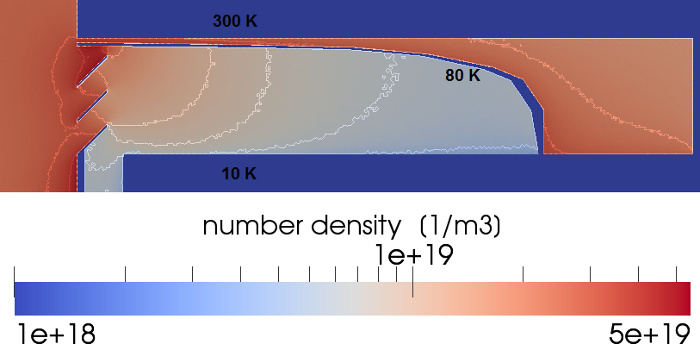
The image below shows the Knudsen number for the gas flow based on the size of the slits (4 cm).
The flow near the slits is in the transition regime. Inside the container the molecules are moving almost freely.
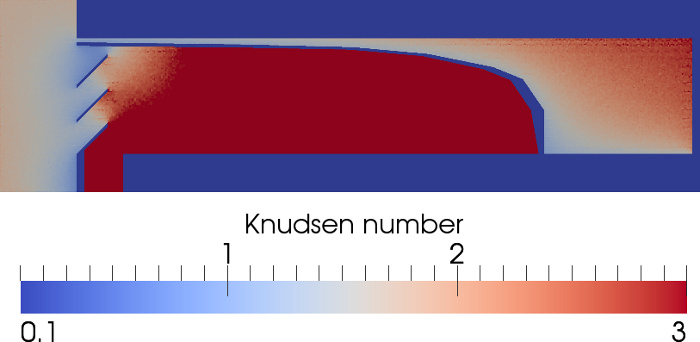
The images below show the x and y components of the flow velocity.
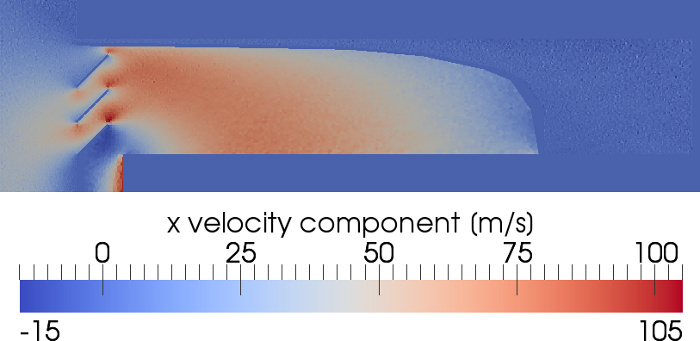

The pumping speed is independent of the inlet pressure for free molecular flow and increases in the transition regime.
The pumping speed was calculated by the molecular rate of adsorption.
As the boundary of the simulation domain is rather near to the inlet the volume in front of the pump should be increased to obtain more realistic values for the pumping speed.
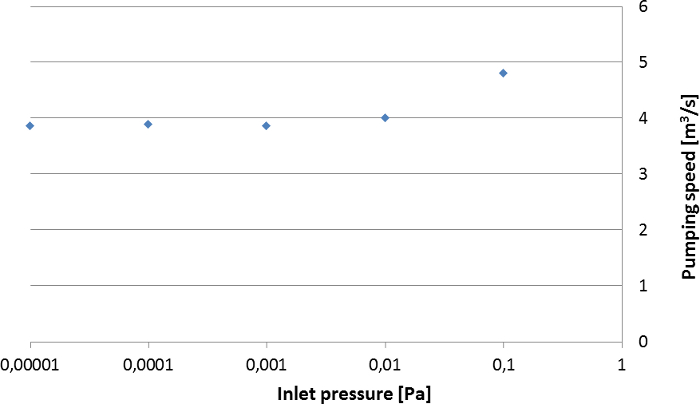
The adsorption probability at the cold wall has a strong impact on the pumping speed as shown in the graph below.
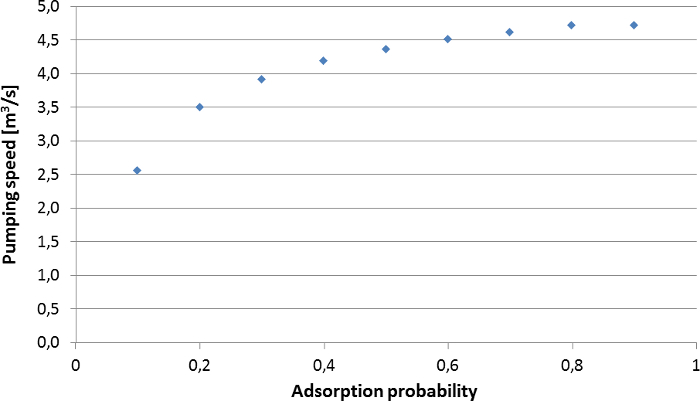
Conclusions
A cryopump can be studied with DSMC simulations. It is possible to optimize the pump geometry with respect to pump efficiency. The pumping speed for gas mixtures can also be studied.